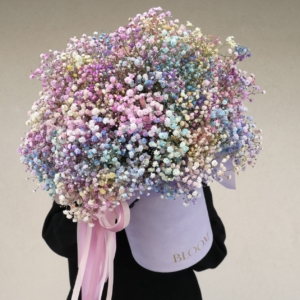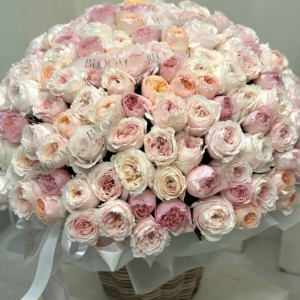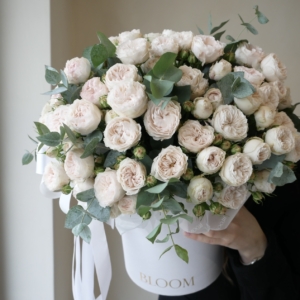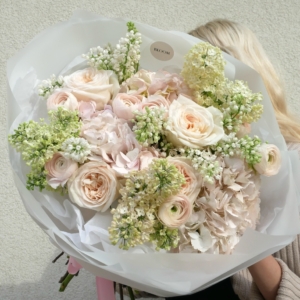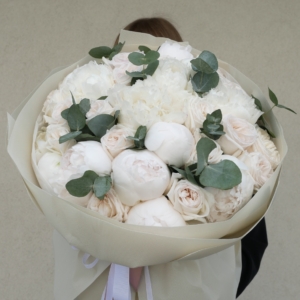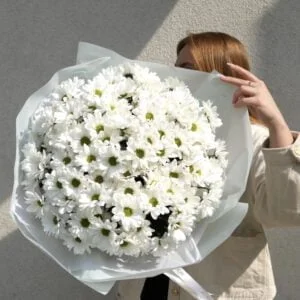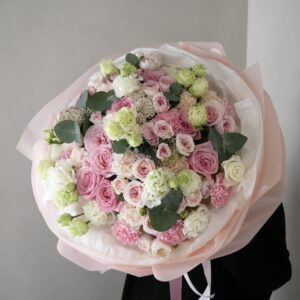Dispelling common myths: How not to care for the cut flowers in your vase!
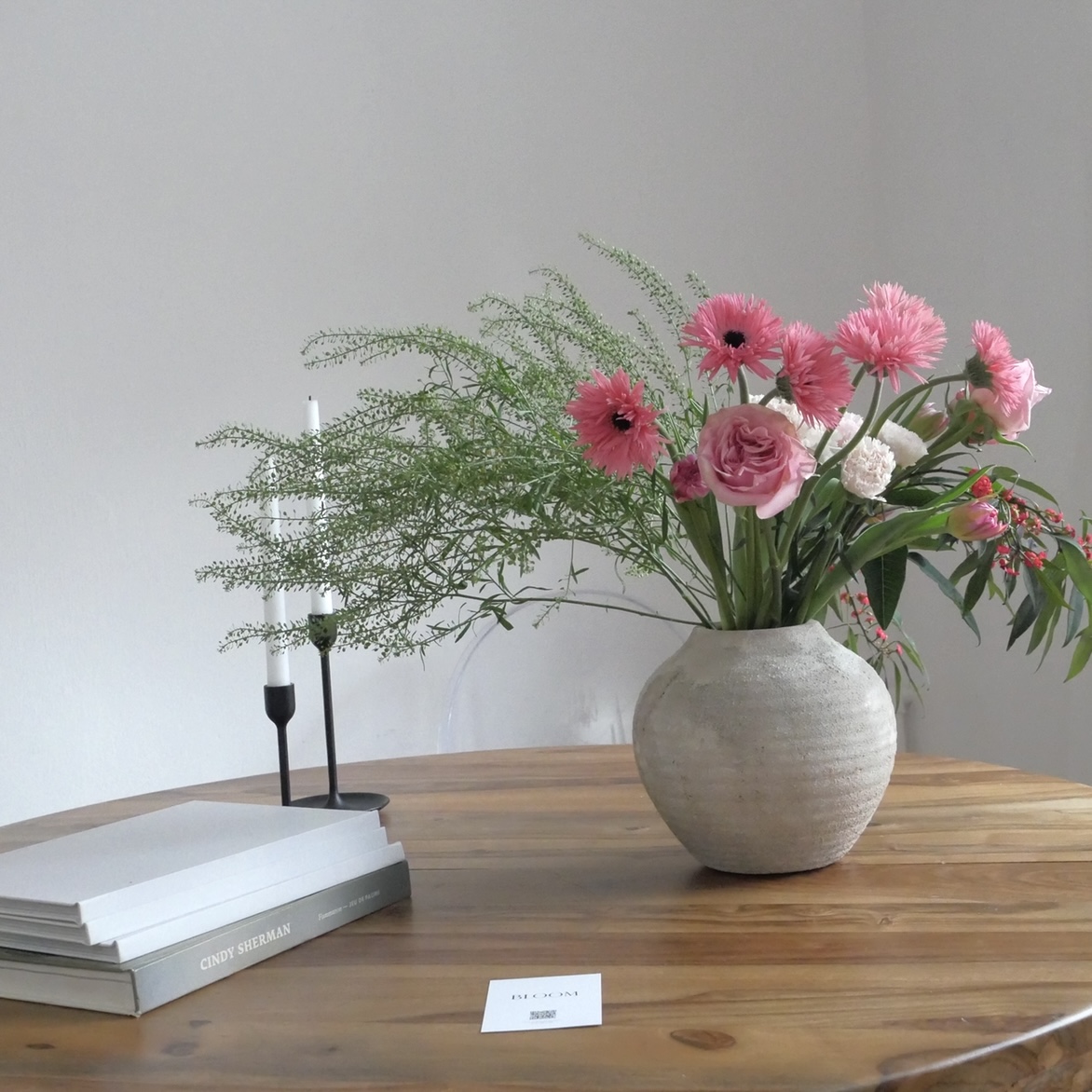
From choosing the perfect bouquet to arranging it in a vase, every step contributes to preserving the beauty of cut flowers and prolonging their life. However, among the many tips and folkways, it’s easy to get confused and succumb to myths and misconceptions that can hinder rather than help in your quest to keep flowers fresh and vibrant.
In this article, we delve into the world of cut flower care to dispel common myths that have endured through time. Uncovering the truth behind these misconceptions, the team at Bloom Flowers shares the knowledge that will dispel misconceptions about cut flower care and allow your bouquet to please your eye for as long as possible.
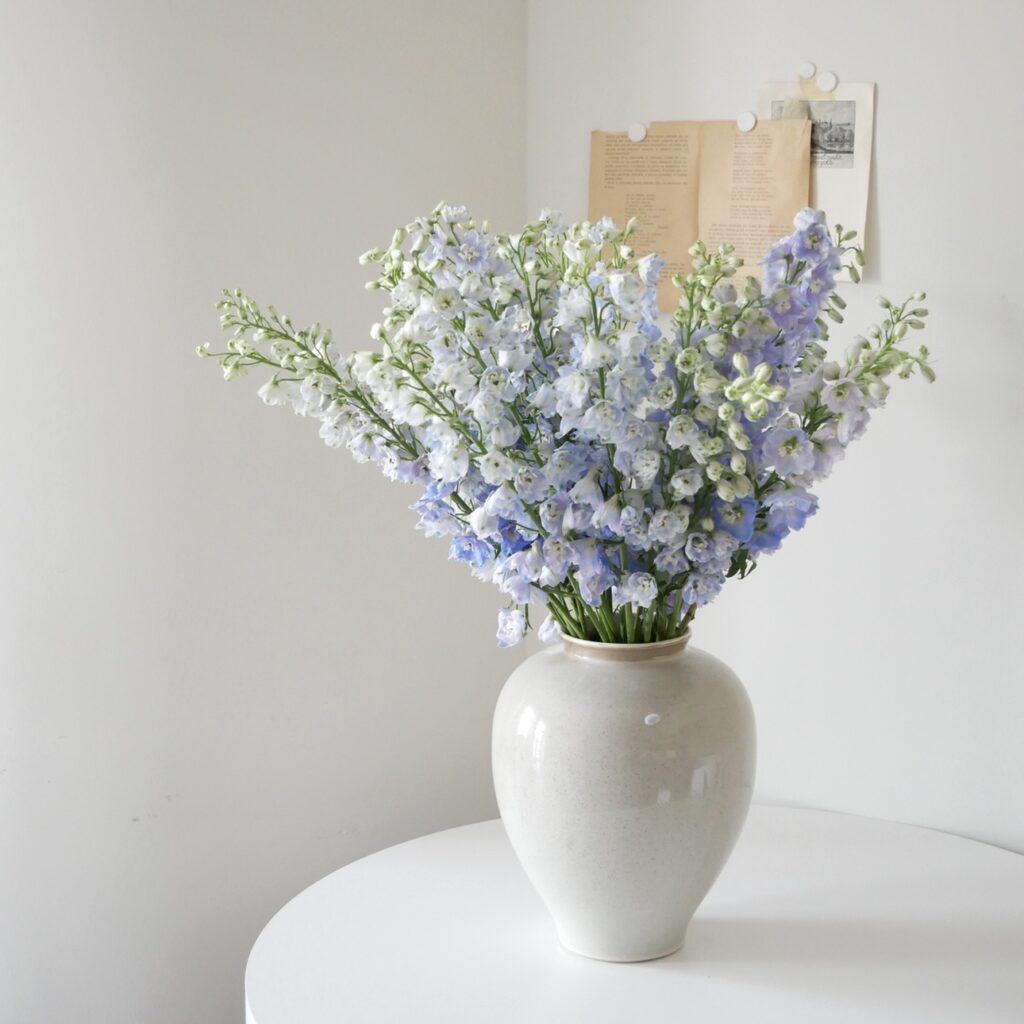
Misconception №1: Alcohol is a disinfectant.
Reality: Adding alcohol to water with flowers does not extend their life in the vase.
- Alcohol can act as a desiccant (a substance that provokes desiccation of plants at the root), causing dehydration of plant tissue. This can accelerate wilting and shorten the life of flowers.
- While small amounts of alcohol may not be immediately toxic to plants, higher concentrations can damage plant tissues, impeding their ability to absorb water and nutrients efficiently.
- Ethyl alcohol can upset the balance of nutrients in the water, affecting the plant’s ability to absorb essential elements needed for hydration and long life.
- Some flowers are sensitive to ethylene, a natural plant hormone that accelerates the aging process.
Misconception №2: Sugar improves flowering and increases its duration.
Reality: Sugar may provide a short-term energy boost to flowers, especially if they have been deprived of nutrients during transportation, its long-term effects on flower health and longevity are questionable.
- Sugar serves as a source of nutrients for bacteria present in the water. As bacteria numbers increase, they can clog flower stems, preventing water absorption and leading to premature wilting.
- Sweetener lowers the pH of the water, making it more acidic. While some flowers prefer slightly acidic conditions, excessively low pH levels can be detrimental to their health and longevity.
- In the presence of bacteria, sugar can undergo fermentation, leading to the formation of alcohol and other compounds. This can create unfavorable conditions for proper hydration of flowers and contribute to their deterioration.
- High concentrations of sweetness in water can create osmotic stress for flowers, impairing their ability to regulate water absorption and causing dehydration or wilting.
Misconception №3: Coca-Cola is a source of energy for flower growth.
Reality: While some people believe in the effectiveness of adding Coca-Cola to water for flower care, there is no scientific evidence to support this claim.
- Cola contains high levels of sugar, which can be a food source for bacteria in the water. This can promote bacterial growth and decomposition in the water, which will eventually lead to flower deterioration.
- The sugary drink also contains various additives such as colorants and preservatives that can be harmful to plants. These chemicals can damage the stems and leaves of flowers, cause their blood vessels to become blocked, and shorten their lifespan.
Misconception №4: Citric acid inhibits the development of putrefactive bacteria.
Reality: Adding acid can be ineffective or even harmful to flower health and longevity.
- Citric acid, like any other acid, can change the pH of water. This can be harmful to some flowers that prefer a certain pH level for optimal water and nutrient absorption.
- This nutritional supplement alone does not provide flowers with the nutrients they need. To keep flowers fresh in the vase for a long time, complex preparations containing an optimal combination of nutrients and antimicrobial agents are necessary.
- Citric acid does not have antimicrobial properties and does not prevent bacterial growth in water. In fact, it can be a source of organic matter that promotes bacterial growth, which can lead to flower deterioration.
Misconception №5: Activated charcoal is a means of fighting harmful substances in water.
Reality: Often lauded as a natural purifier in a variety of applications, including air and water filtration, activated charcoal has found its place among flower care myths.
- Activated charcoal does not contain the nutrients necessary for the vitality and longevity of flowers. Without proper nutrition, plants will not be able to prolong their freshness.
- Adding charcoal to water can change the pH of the environment. This can affect the flowers’ ability to absorb water and nutrients, which can cause them to deteriorate.
- Activated charcoal can release particles and contaminants into the water, which can affect the quality and purity of the water as well as the condition of the flowers.
Misconception №6: Ice in a vase – because the colder the water, the better.
Reality: The cold temperature of ice does not help keep flowers fresh for a longer period of time.
- Moving flowers from room temperature to cold ice water can cause thermal shock, which can damage delicate flower structures and accelerate wilting.
- Ice can freeze the water in the vase, which limits the flowers’ ability to absorb liquid. Insufficient nutrition can cause flowers to wilt.
- When ice comes in contact with warm room water, condensation can form in the vase. This can promote bacterial growth in the water, causing the flowers to deteriorate.
- Ice can cause damage to delicate flower petals if it comes into contact with them, especially if the ice is in close contact with the plants.
Misconception №7: Flowers love sunlight and warmth.
Reality: Although sunlight plays an important role in plant life, direct sunlight on cut flowers can have the opposite effect and even cause them to fade faster.
- Direct sunlight can cause the water in the vase to overheat, which can negatively affect the viability of the flowers. High temperatures can cause aging and accelerated drying of stems and petals.
- The sun’s ultraviolet rays can damage sensitive flower petals, causing them to fade or even burn. This can cause the flowers to lose their brightness and freshness.
- Abrupt temperature changes, which can occur when exposed to direct sunlight, can also be harmful to flowers. This can stress the plants and cause them to dry out.
Misconception №8: On the kitchen table, a bouquet is pleasing to the eye.
Reality: It may be a common place to place a bouquet, but next to fruits and vegetables, flowers will suffer.
- Fruits and some vegetables give off ethylene gas, which stimulates ripening and speeds up the aging process. This gas can also cause flowers to wilt, making them more quickly lifeless and dull.
- Fruit can be a source of bacteria and mold that will be harmful to flowers. This can contaminate the water in the vase and damage the stems and petals of the flowers.
- Also, fruit placed near the bouquet can change the humidity of the environment, which can be harmful to some types of flowers. For example, too much humidity can promote bacteria and mold growth, while too little humidity can dehydrate flowers.
There are many myths and perceptions in the world of flower care that often contradict facts and recommendations. In this article, we have looked at some common myths about cut flower care and tried to understand the reality of each of them. The Bloom flowers team, in turn, offers simple rules for flower care – fresh cut, clean vase and water, use of special nutrient fertilizer, regular water changes – which we will discuss in more detail in the next article.
Author: Kseniia Troian

